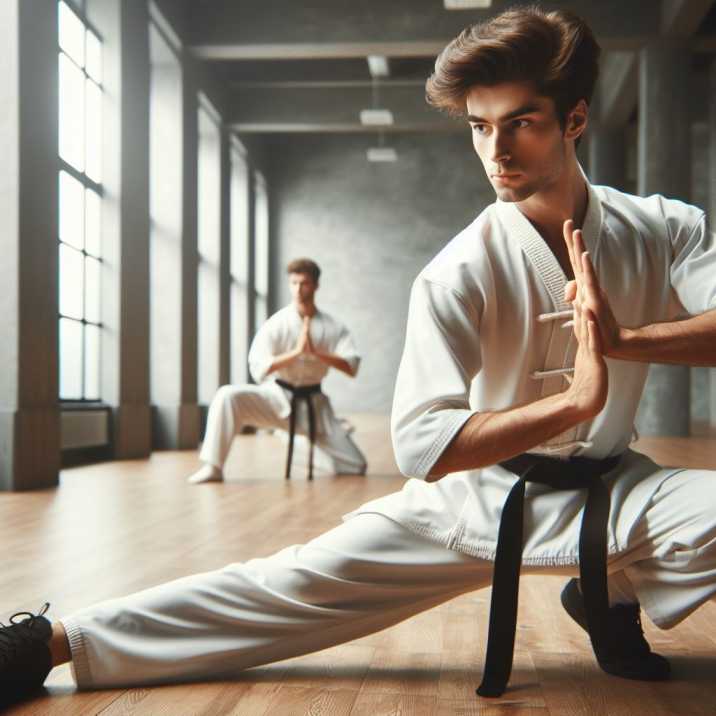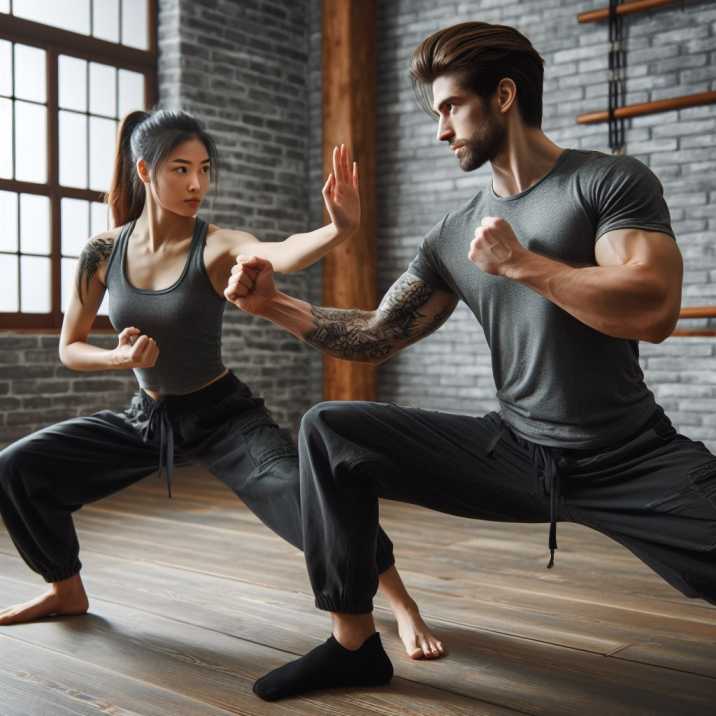Introduction:
Table of Contents
Embarking on the journey of learning Kung Fu is both thrilling and challenging. For beginners, mastering the foundational drills is key to building a strong martial arts practice. In this comprehensive guide, we’ll explore seven essential Kung Fu training drills for beginners. Whether you’re intrigued by the fluid movements of Tai Chi or the explosive power of Wing Chun, these drills will lay the groundwork for your journey into the world of Kung Fu.
Kung Fu training drills for beginners
Stance and Posture
Before diving into the intricate techniques of Kung Fu, it’s crucial to develop a solid foundation in stance and posture. Begin by standing with your feet shoulder-width apart, knees slightly bent, and spine straight. Maintain a relaxed but alert posture, with your hands positioned in front of your body for balance and defense.

Basic Punches and Kicks
Once you’ve established a strong stance, it’s time to familiarize yourself with basic punches and kicks. Practice executing punches such as the jab, cross, and hook with proper form and technique. For kicks, start with fundamental strikes like the front kick, side kick, and roundhouse kick. Focus on precision and control, gradually increasing speed and power as you become more comfortable.
Blocking and Defense
Effective defense is a cornerstone of Kung Fu training. Learn essential blocking techniques to deflect incoming attacks and protect yourself from harm. Practice blocks such as the high block, low block, and parry, mastering the ability to anticipate and respond to your opponent’s movements with agility and precision.
Forms and Kata
Forms, or “kata” in Japanese martial arts, are choreographed sequences of movements that simulate combat scenarios. These routines not only improve physical conditioning but also cultivate mental focus and discipline. Start by learning basic forms such as the “Five Animals” or “Tiger Crane” form, focusing on fluidity and synchronization of movement.
Strength and Conditioning
Building strength and endurance is essential for any martial artist. Incorporate strength training exercises such as push-ups, squats, and planks into your routine to enhance muscle power and stability. Additionally, engage in cardiovascular activities like running or skipping to improve stamina and cardiovascular health.
Partner Drills and Sparring
Partner drills and sparring are invaluable components of Kung Fu training, allowing practitioners to apply their skills in a dynamic and interactive setting. Practice controlled sparring sessions with a partner, focusing on timing, distance, and technique. Engage in partner drills such as pad work or controlled grappling to further refine your abilities.

Meditation and Mindfulness
Beyond physical techniques, Kung Fu encompasses mental and spiritual aspects as well. Incorporate meditation and mindfulness practices into your training regimen to cultivate inner peace, focus, and mental clarity. Spend time each day in quiet reflection, connecting with your breath and centering your mind.
Information-Based Table of Kung Fu training drills for beginners:
| Drill | Description |
|---|---|
| Stance and Posture | Focus on proper alignment and balance. |
| Basic Punches | Practice fundamental punching techniques. |
| Blocking Techniques | Learn essential defensive maneuvers. |
| Forms and Kata | Master choreographed sequences of movement. |
| Strength Training | Build muscle power and endurance. |
| Partner Drills | Engage in interactive training with a partner. |
| Meditation | Cultivate mental focus and inner peace. |
Conclusion:
In Conclusion, Kung Fu training drills for beginners, Mastering the art of Kung Fu requires dedication, discipline, and perseverance. By incorporating these seven essential training drills into your practice regimen, you’ll lay a solid foundation for your journey as a martial artist. Remember to approach each drill with focus and intention, continuously striving for improvement. With dedication and consistent effort, you’ll unlock the true potential of Kung Fu and embark on a transformative journey of self-discovery.
FAQs:
- Q: How often should I practice these Kung Fu training drills? A: Aim to practice these drills at least 3-4 times per week to see noticeable progress and improvement in your skills.
- Q: Can anyone learn Kung Fu, regardless of age or fitness level? A: Yes, Kung Fu is accessible to people of all ages and fitness levels. With proper guidance and training, anyone can learn and excel in this martial art.
- Q: Are Kung Fu training drills suitable for self-defense purposes? A: Yes, many Kung Fu techniques are highly effective for self-defense. By mastering these drills, you’ll develop the skills and confidence to protect yourself if the need arises.
- Q: Is it necessary to join a Kung Fu school or can I learn on my own? A: While self-learning is possible to some extent, joining a reputable Kung Fu school or training under a qualified instructor is highly recommended for proper guidance and progression.
- Q: How long does it take to become proficient in Kung Fu? A: The time it takes to become proficient in Kung Fu varies depending on individual dedication, practice consistency, and natural ability. However, with regular practice and dedication, significant progress can be made within a few months to a year.


